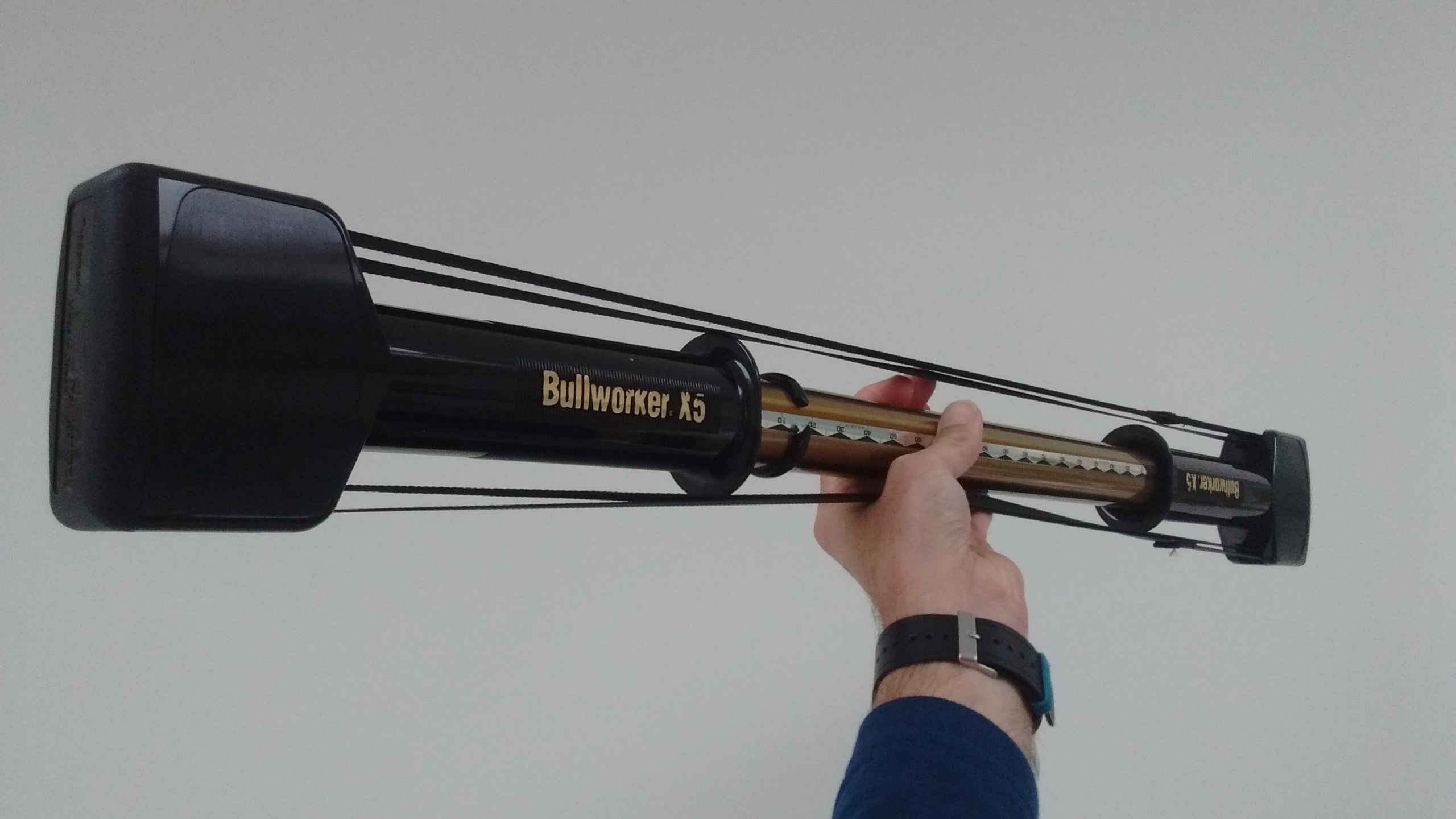I’ve trained with weights since I was a teenager and have owned both multigyms and free weights. In the various houses that I’ve owned over the years, I’ve always tried to have a gym in my garage. Nothing too fancy or expensive: a bench, a lat pull down machin, a pull up bar and a set of dumbbells and barbells.
It was whilst performing a set of dumbbell flyes that I first had concerns about lifting with weights. Like most men growing up in the 80’s, I was a big fan of Arnold Schwarzenegger. He was a proponent of this particular exercise to develop his own massive chest.
Trying to emulate my hero, I set about trying to perform a heavy set of flyes in the expectation that this would really stretch my pecs and result in hypotrophy.
I started the movement with both dumbbells pressed above me as I lay on my weights bench. With straight arms, the weights descended until I ended up in a crucifix type position. I then squeezed my pecs to propel the weights to the starting position.
I carried on in this way for several more reps before I became aware of a pain in my left bicep tendon at the elbow. I immediately stopped the exercise and called a halt to my workout session.
Nothing had ruptured. I had seen ‘World’s Strongest Man’ events on TV and was aware of what a bicep tear was – when the tendon comes away from the bone and the bicep muscle itself contracts all the way up to the upper arm. Fortunately, this hadn’t happened in my case.
After a few days off, I resumed my workout sessions but avoided that particular flye motion. It might well build huge pec muscles but the risk to reward ratio was just too great for me.
Deadlifts were another exercise that always seemed to injure me.
I’d read numerous muscle magazines which had always recommended concentrating on the large compound movements to build mass: the bench press, the squat and the deadlift.
Whenever I’d try to do the deadlift, I’d always end up injuring my lower back and having to take weeks off my training.
I’m now in my mid 40s and have made a decision to sell all my weights. I don’t know whether it’s age or whether I’m no longer motivated to lift heavy weights but I felt that lifting weights was no longer the best way to maintain my strength levels.

Instead, I started to focus on using my Bullworker (link to Amazon).
The Bullworker has been around since the 1960s and was developed by a Gert F. Kölbel. The fact that they’re still around today gives you some idea of the effectiveness of this tool.
It consists of two cylinders that slide one inside the other. Inside the cylinder is a spring that compresses as the cylinders are pressed together. There are handles at each end of this tube set up to make things more comfortable. There’s also a band that connects the two handles.
The spring in the device can therefore be compressed in one of two ways: the handles can be squeezed together directly or the band can be pulled. This enables the Bullworker to be used in multiple ways to exercise the various muscles in the body.
The Bullworker can either be used to perform yielding isometrics – where the muscle contracts against a fixed level of resistance for a defined period of time, or to perform partial reps – small movements for a particular exercise.
Isometrics are a great way to develop muscle if they are used in a particular way – outlined in this T-nation article. Essentially, you hold the isometric hold for much longer that the typical 7-10 second timeframe that is usually recommended. It’s more like 50 seconds.
This is interesting because this is how long a set should last for when using conventional weights when training for hypertrophy. This is referred to as Time Under Tension and is a crucial component of muscle development.
With the Bullworker you’re keeping the muscles consistently under tension for the entire exercise. This isn’t the case when using normal weights. For instance, take the bicep dumbbell curl. The muscle is under tension at the mid way point where the forearm is at right angles to the body. There’s very little tension in the bicep when the arm is hanging straight down or when the arm is straight up.
I also like the ‘mind muscle’ connection you get when using the Bullworker. As the muscle being worked is under constant tension, you can really feel it working in a much more intense way that with conventional weights.
I’ve personally found that since using the Bullworker, my muscles have developed a dense, hard look and feel to them.
Don’t take my word for it; check out the video below. He’s also using a Steelbow (link to Amazon.com) – the more compact version of the Bullworker.
Related Articles:
Original, Vintage Bullworker X5 Review and Exercises
The Bullworker Iso-Bow Review
Isometrics build muscle fast!!
Isometrics for martial arts: how you can get really strong
Is the Bullworker as good as weights?
Bullworker vs Isokinator vs Isobow
The best isometric exercise equipment 2022(with pictures)
Will a Bullworker build muscle?
How often do you workout with a Bullworker?
The Bullworker: how much force does it exert?
Is weight training useful in martial arts?
